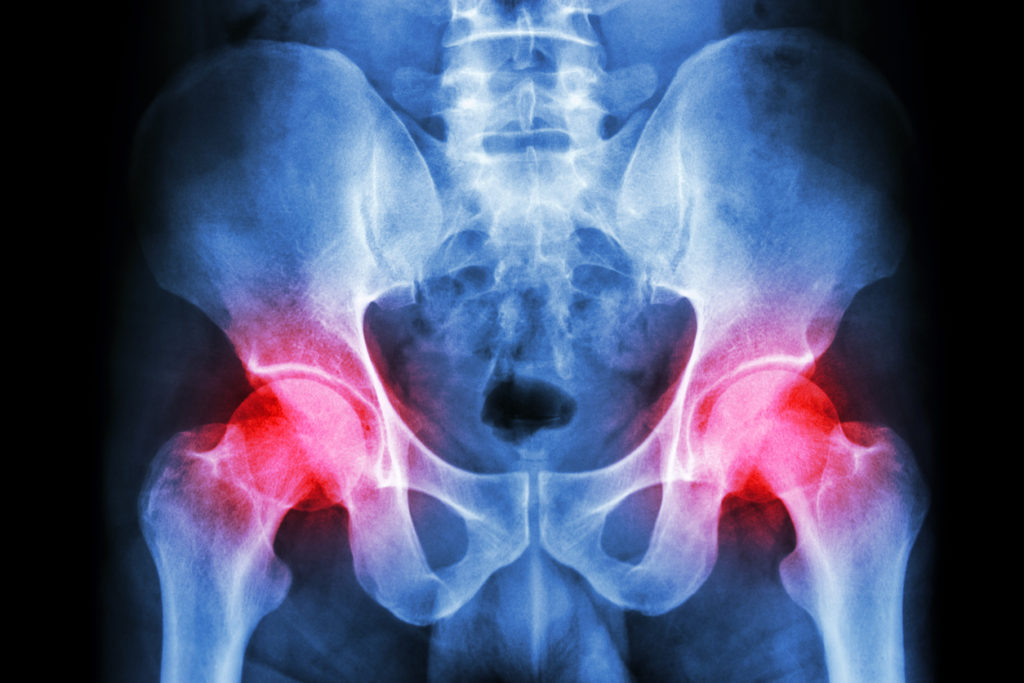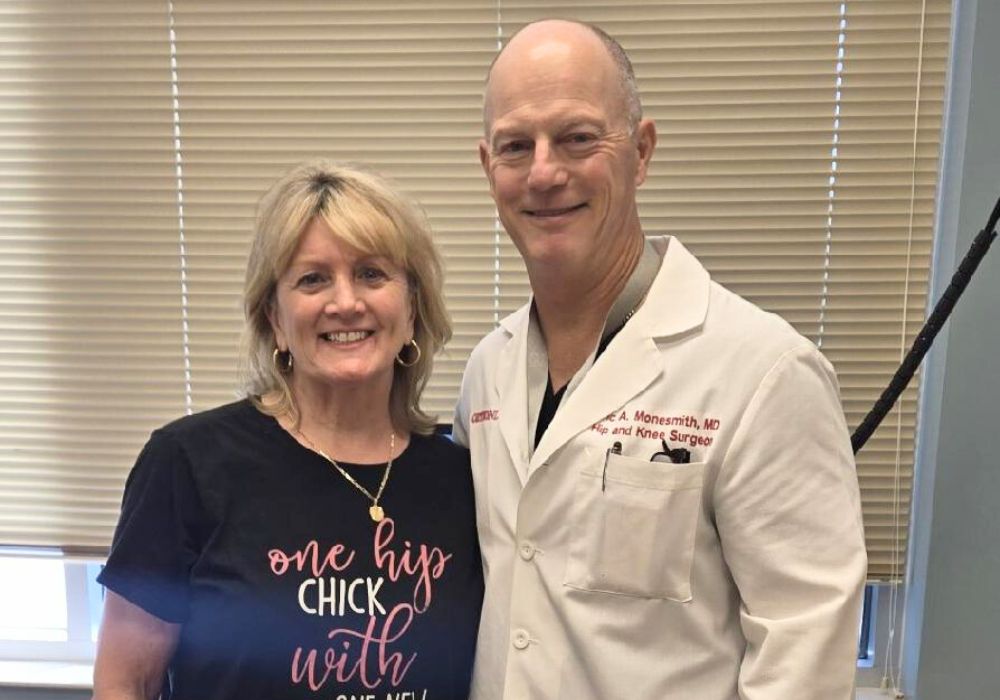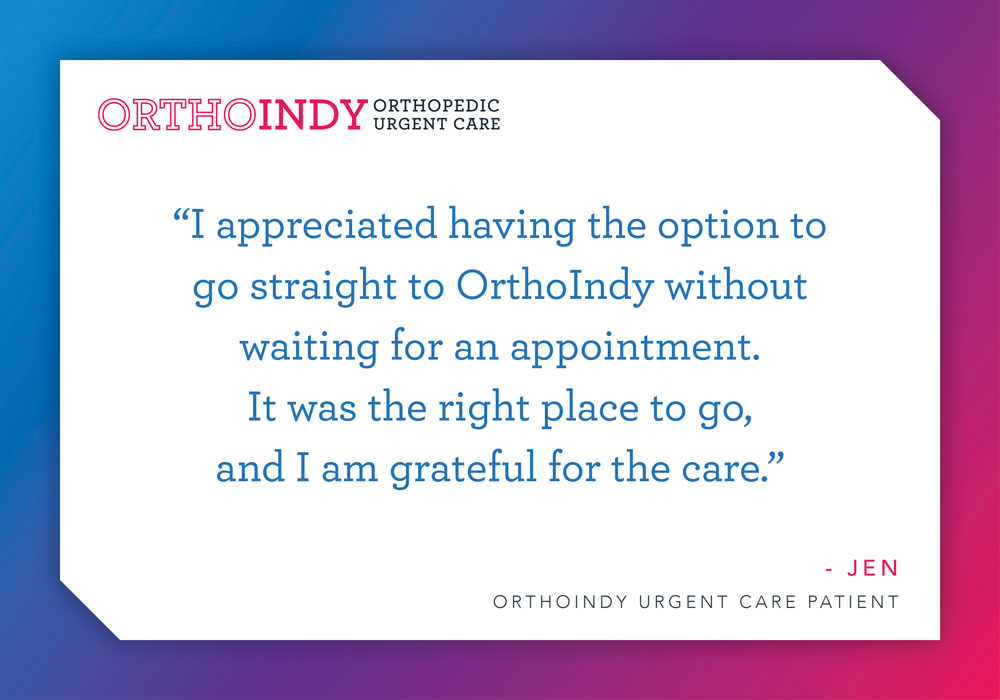Bursitis is an inflammation of the bursa, which is a small jelly-like sac that are throughout the entire body. Bursitis is common in the shoulder, elbow, hip, knee and heel. Bursae act as cushion and reduce friction between bones and soft tissue.
Anatomy
There are two major bursae in the hip that normally become irritated and inflamed: the greater trochanteric bursa and the iliopsoas bursa.
The greater trochanteric bursa is the bursa that covers the bony point of the hip bone on the outer side of your hip. Inflammation in this bursa is called trochanteric bursitis.
The iliopsoas bursa is located on the inside of the hip, in the groin area. This can be confused with other causes of groin pain. This is much less common than trochanteric bursitis but is treated in a similar fashion.
Cause
Hip bursitis can affect anyone, but is more common in women and middle-aged or elderly people. Additionally, the following factors have been linked to the development:
- Overuse injury of the hip
- Hip trauma
- Spine disease
- Leg-length inequality
- Rheumatoid arthritis
- Previous hip surgery
- Bone spurs or calcium deposits
Symptoms of hip bursitis
- Pain at the point of the hip or in the groin
- Pain that extends to the outside of the thigh area
- Pain that is sharp and intense, followed by more of an ache
- Pain that is worse at night when lying on the affected hip or getting up from a chair after sitting for awhile
- Pain in the hip with prolonged walking, stair climbing or squatting
Physician examination
To determine whether you have bursitis of the hip, your physician will ask you for a complete medical history, ask questions about your pain and how long you have been experiencing your symptoms and conduct a physical examination. An X-ray or MRI may be necessary to rule out other injuries.
Make an appointment with a hip specialist at OrthoIndy
Treatment
Typically treatment for bursitis of the hip is non-surgical and includes:
- Non-steroidal anti-inflammatory drugs (NSAIDs): Such as ibuprofen, may relieve pain and control inflammation. However, NSAIDs should only be used for a limited period of time.
- Activity modification: Such as avoiding activities that worsen symptoms.
- Physical therapy: Your physician may recommend physical therapy exercises to increase hip strength and flexibility. Exercises can be done at home or with a physical therapist.
- Assistive devices: Use of walking cane or crutches when symptoms worsen.
- Steroid injection: Injection of a corticosteroid along with a local anesthetic may relieve symptoms temporarily or permanently. If pain returns, another injection may be needed. (Make an appointment with a non-operative pain management physician.)
Surgery is rarely indicated for hip bursitis. If nonsurgical options fail to relieve pain and inflammation, your physician may recommend surgical removal of the bursa, which can be done through an open or arthroscopic approach. The hip can still function normally without the bursa.
Rehabilitation
The surgery is performed as an outpatient procedure. Patients can bear weight as tolerated on the surgical leg immediately after surgery but typically require crutches or a walker from a few days to up to a couple weeks. Physical therapy is recommended as part of the rehabilitation and full recovery is expected at 8 to 12 weeks.
Learn more about hip treatment at OrthoIndy.
Schedule an appointment
Your well-being is important to us. Click the button below or call us to schedule an appointment with one of our orthopedic specialists. If your injury or condition is recent, you can walk right into one of our OrthoIndy Urgent Care locations for immediate care. For rehabilitation and physical therapy, no referral is needed to see one of our physical therapists.





